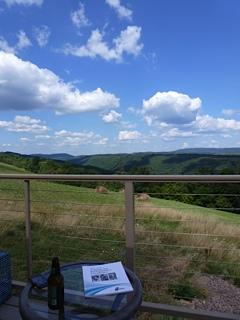Blogrige
The Official Baldrige Blog

Anyone who is new to Baldrige organizational assessment—and takes a look inside a Baldrige Excellence Framework booklet for the first time—can see right away that there is a lot to learn!
But Baldrige performance improvement practitioners around the world tell beginners that it will be worth the benefits to your organization's performance to learn more. Here are seven ways to get started:
1. Scan the questions in the Organizational Profile (available here as a free PDF to download), and see if you can answer them. Discussing the answers to these questions might be your first Baldrige self-assessment.
2. Study the 11 Baldrige Criteria core values and concepts, including a systems perspective, visionary leadership, ethics and transparency, customer-focused excellence, valuing people, managing for innovation, management by fact, societal responsibility, focus on success, delivering value and results, and organizational learning and agility. (See a Baldrige Excellence Framework booklet for detailed descriptions). These beliefs and behaviors are embedded in the Baldrige Criteria and found in high-performing organizations. Consider how your organization measures up in relation to the core values. Are there any improvements you should be making?
3. Answer the questions in the titles of the 17 Criteria items to reach a basic understanding of the Criteria and your organization’s performance.
4. Look at the Criteria category titles, item titles, and area-to-address headings to see a simple outline of a holistic performance management system. See if you are considering all of these dimensions in establishing your leadership system and measuring performance. If you need more explanation, read the questions that follow the headings.
5. Use the Criteria and their supporting material as a general resource on organizational performance improvement. Use the content in the booklet and online on the Baldrige Performance Excellence website as a source of ideas about improving your organization. The material may help you think in a different way or give you a fresh frame of reference.
6. Attend the Quest for Excellence® or the Baldrige Fall Conference. These events highlight the role-model approaches of Baldrige Award recipients, which have used the Criteria to improve performance, innovate, and achieve world-class results. Workshops on Baldrige self-assessment are often offered in conjunction with these conferences.
7. Consider becoming a Baldrige examiner. Examiners receive valuable training and gain experience in understanding and applying the Criteria that they can use within their own organizations. Visit the website of the Alliance for Performance Excellence for contact information for your state, local, or sector-specific program and see “Become an Examiner” for information on the Malcolm Baldrige National Quality Award Board of Examiners.
Related blog posts: “Baldrige Self-Assessment: Seven Ways to Get Started” and “Baldrige Self-Assessment: Seven Steps for a Full Examination.”
About the author
Related Posts
Comments
- Reply





